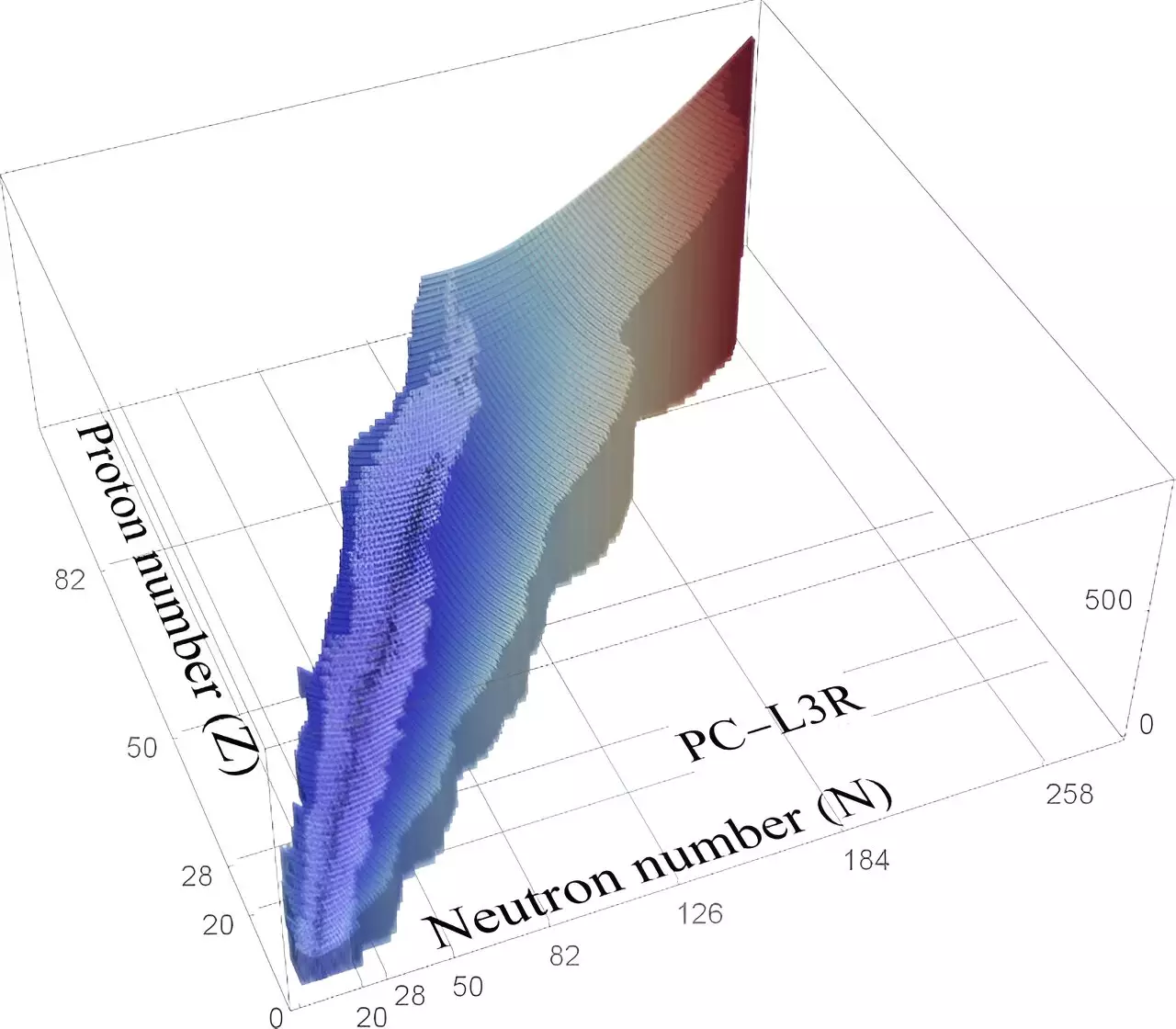The field of nuclear physics has witnessed unparalleled advancements in recent years, thanks to the advent of new generation radioactive-ion beam facilities. These cutting-edge facilities have revolutionized the way experiments are conducted and have opened up exciting possibilities for discovering new isotopes and delving into the realms of exotic nuclei. This has significantly contributed to a deeper understanding of the origins of the chemical elements in the universe. In a groundbreaking study published in Atomic Data and Nuclear Data Tables, researchers from the Institute of Modern Physics (IMP) of the Chinese Academy of Sciences (CAS) collaborated with Technische Universität München to predict the existence of previously unknown exotic nuclei. These predictions were made using the covariant density functional theory, showcasing the immense potential of this theoretical framework in uncovering the secrets of the nuclear world.
To confirm the existence of newly discovered isotopes and explore the limits of isotopic chains, it is crucial to determine essential characteristics such as nuclear masses, radii, and half-lives. Theoretical predictions play a pivotal role in guiding experimental endeavors and refining our understanding of these exotic nuclei. The covariant density functional theory has emerged as one of the most successful approaches for studying nuclear structure. By describing the interactions among nucleons in the nuclear medium, this theory provides valuable insights into the behavior of exotic nuclei. The interactions can be modeled using either point-coupling interaction or meson-exchange interaction. With the relativistic Hartree-Bogoliubov approach as their tool, researchers systematically investigated the ground state properties of all isotopic chains ranging from oxygen to darmstadtium. These properties encompass a wide range of parameters, including binding energies, separation energies, radii, Fermi surfaces, ground-state spins, and parity.
Exotic nuclei, which exhibit unique and unexplored phenomena, serve as crucial testing grounds for our understanding of quantum many-body systems. With approximately 2,500 nuclides having been experimentally proven to exist, the scientific community is eagerly anticipating the discovery of even more exotic nuclei. The existence of new facilities, dedicated to unraveling the mysteries of these nuclei, holds immense promise. By matching theoretical predictions with experimental findings, scientists can effectively scrutinize and validate theoretical models. The quest to explore new frontiers in nuclear physics continues to drive researchers towards the development of novel techniques and facilities.
The ground-state properties of nuclei, obtained through theoretical predictions, shed light on various phenomena that form the backbone of nuclear physics research. The drip line of neutron and proton, which marks the point at which the nuclear binding energy vanishes, plays a pivotal role in understanding nuclear stability. Additionally, the halo phenomenon, characterized by the presence of weakly bound nucleons at the periphery of a nucleus, has garnered significant attention in recent years. Theoretical calculations provide valuable insights into the existence and behavior of halo nuclei, leading to a deeper understanding of their unique properties. Furthermore, the concept of magic numbers, referring to the unusually stable configurations of nucleons in the atomic nucleus, has been reexamined in light of new theoretical predictions. By delving into these topics with great detail, researchers can pave the way for future experimental and theoretical investigations in nuclear physics.
The advent of new generation radioactive-ion beam facilities has undeniably redefined the boundaries of nuclear physics research. By enabling the exploration of exotic nuclei, these facilities unlock a treasure trove of scientific advancements. The discovery of new isotopes, the determination of nuclear properties, and the validation of theoretical models provide unprecedented opportunities to deepen our understanding of the universe’s building blocks. From neutron star mergers to core-collapsed supernovae and X-ray bursts, the extreme astrophysical environments that lead to nucleosynthesis can now be studied in greater detail. The future of nuclear physics research lies in the hands of dedicated scientists and the innovative technologies that continue to push the frontiers of scientific knowledge.
With the advancements in new generation radioactive-ion beam facilities, the field of nuclear physics has embarked on an exciting journey towards uncovering the secrets of exotic nuclei and expanding our understanding of the origins of chemical elements. The covariant density functional theory serves as a powerful tool in predicting the existence of exotic nuclei and exploring their ground state properties. The close collaboration between research institutions and the synergistic combination of theoretical predictions and experimental findings cement the foundations of nuclear physics research. As we push the boundaries of scientific knowledge, the revelations borne out of these endeavors promise to reshape our understanding of the universe and its fundamental components.


Leave a Reply